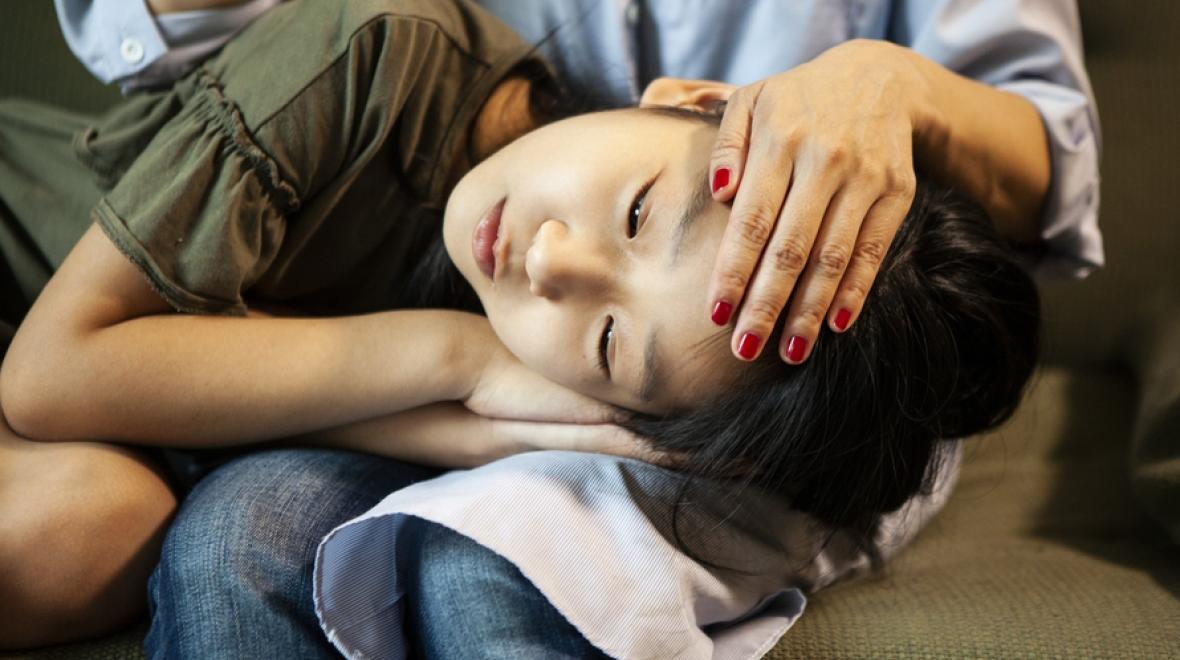
Editor's note: This article was sponsored by Western Washington Medical Group.
Kids are notorious for identifying every illness or emotional upset as either a stomachache or a headache. But believe it or not, some very young children do get headaches — even the dreaded migraine. Figuring out whether your child is suffering from migraines or something else can be a little tricky. But it’s worth doing the detective work, especially if your child complains of headaches often. “There’s a lot we can do with kids and headaches if it’s negatively impacting life,” says Josh Webb, ARNP, board chair of Western Washington Medical Group and a practitioner at its Lake Serene Clinic.
People talk about migraines as a type of headache, but that is not quite accurate. “Migraine is a symptom set which can affect the whole body. Headache is a part of that, but it can also include nausea and vomiting, light sensitivity, sound sensitivity and body sensitivity that come along with the headache,” says Webb. Anyone can experience a migraine, and individual presentation of symptoms is highly variable from person to person, and even from one occurrence to another. Some people get migraines as rarely as once a year or less often. Others experience migraines several times each week. Migraines often last all day and some can last for three or more days. Medications can treat a migraine, and there are steps you can take to prevent them in your kids.
Identifying a migraine
There is no typical age for the onset of migraines. An older adult can suddenly get their first migraine, and Webb says it’s possible that even some preverbal children experience them. Preschoolers have been diagnosed with migraines, but pediatric migraines seem to be most common during the middle and high school years. Although sometimes migraines become less frequent, “It’s not like asthma, where you can grow out of it and no longer have it,” says Webb.
Diagnosing a migraine, especially in children, is not always straightforward.
“It’s difficult to generalize, because migraines are super variable,” Webb notes. “The biggest thing I would look at is other things that are going along with the headache itself as well as the degree of incapacitation.”
A child who complains of a headache and is bothered by bright lights and wants to be held (or an older kid who retreats to a darkened bedroom) is likely suffering from a migraine. If a young child complains of a headache but continues playing normally, it’s probably just a headache.
Migraine masqueraders
“Remember the headache is a part of the migraine, but lots of things can cause headaches that don’t have anything to do with migraines,” says Webb.
If your child is having headaches that don’t fit the migraine description, there could be something else going on. It is not uncommon for a child who is experiencing mental health issues such as anxiety or social issues such as bullying to exhibit physical symptoms that include headache. One indicator for this is if the headache usually clears up soon after the decision is made to keep the child home from school. But trust your instincts.
“The parent is usually the one who suspects that maybe more is going on here. As providers, we don’t really know what’s going on in your day-to-day lives,” says Webb. If you think there is a mental health issue or a problem at school, have a conversation with your child and let them know you are there to help. Talking to your child’s teacher or a school counselor can also help you identify and deal with nonmedical roots of the problem.
Your primary care provider can also help tease out whether a headache is related to a migraine or other causes. Children sometimes feel more comfortable talking with a professional, and if there is an underlying medical cause for the headaches, your primary care provider can identify and treat it. Many children discover they need glasses only after experiencing frequent headaches due to eyestrain from trying to see the board in their classroom.
What causes migraines
Besides eyestrain, the sudden onset of migraines in a person who never had them before can be the result of a concussion or other head or neck injury. But for many people, migraines are just a fact of life; there isn’t a clear answer for why some people get them and others don’t.
“The cause of migraines is a hotly debated thing,” says Webb. Although there is no consensus on the cause of headaches or the reason why more women than men experience them, there are well-known triggers for migraines in the people who do get them. Learning to avoid those triggers can make a big difference in how often a person experiences a migraine.
“One of the biggest preventive measures is to get people to sleep well,” says Webb. Establishing a healthy and regular sleep schedule is especially important for teens, who are often sleep-deprived. But for all ages, sleep disorders such as sleep apnea can trigger migraines. Managing stress, getting enough exercise, staying hydrated and eating regular meals (hypoglycemia is a frequent migraine trigger) are other preventive strategies.
Nowadays, many young athletes are consuming sports drinks, which have loads of caffeine. Any adult who has tried to quit coffee is familiar with the caffeine withdrawal headache. But that headache can also be a migraine trigger, and consumption of energy drinks is an increasingly common factor in pediatric migraines.
Treatment for pediatric migraines
Prevention is important, but sometimes it’s not enough. It’s fine to treat the occasional headache (or even migraine) with over-the-counter ibuprofen or acetaminophen and a nap. If this doesn’t help or if the headaches are frequent, you should talk to your primary care provider. Children younger than 6 who experience migraines or regular headaches should be seen by a neurologist.
There are effective medicines for migraines. Some of them are prescribed to be taken as needed at the first sign of a migraine. Others are taken regularly as a preventative.
“The general rule of thumb is that we’re trying to get headaches down to less than one a week. But it’s variable, and depends on how affected you are,” says Webb. An adult might be able to power through a weekly migraine, but a child who is missing school once a week might require medication to avoid repeating a grade.
“If you’re in a place where migraines are significantly affecting your child’s life in a negative way, then you should talk to their primary care provider and see what can be done. We have a lot of options for dealing with migraines. And it isn’t always just to go on a bunch of pills. We can do things that don’t just involve medicine,” says Webb. The course of treatment for recurring migraines is as variable as the symptoms, but children (and their parents) no longer need to simply suffer through them without support.












